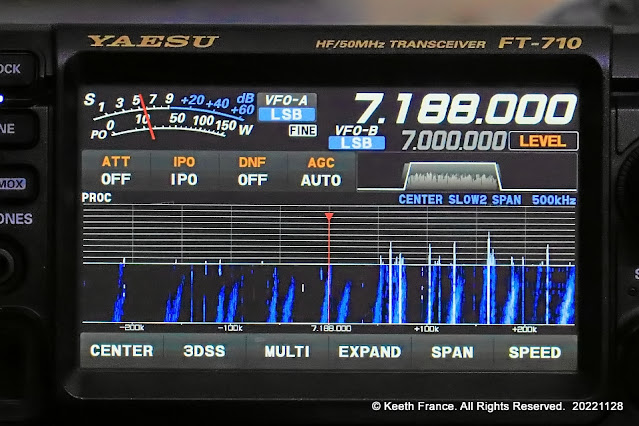Ready, Set, Go
 |
The smart meter RF interference on 80 meters and 40 meters make DX communications impossible. The sunspot cycle is heading for a peak and 10 meters is sometimes wide open in daylight. 6 meters has its openings too. The ideal affordable antennas for these amateur radio bands may be a 5 element beam for 6 meters, a 3 element beam for 10 meters, a 3 element beam for 17 meters, a 3 element beam for 15 meters and a 3 element beam for 20 meters, all mounted on a tower at 40 to 50 feet or more. There are antenna makers with these beams that cover this frequency range, all on one boom. These antennas may be a bit more expensive but they seem to perform as expected. These antennas are for hams with the appropriate real estate.
I have a 5 element 15 meter Hygain beam on a 26 foot boom, but where I could mount the antenna in my yard would cause the elements or the boom to hang over the public road, and that is illegal and cannot be done. I could position the antenna so that it does not hang over the road, but I will be beaming either East or West. So this is out of the question, and I have to find an alternate antenna. Probably a delta loop may solve my problem. 3 elements or 4 elements should be good, and the height above ground is not critical, when vertically polarized.
Sometimes we forget that all ham radio operators do not live in the USA where all ham radio parts and components can be found in the hardware store around the corner. Many ham radio operators around the world have to be creative and innovative to get their amateur radio station on the air, and to keep it on the air. V4 is one of those places with no hardware store around the corner that sell amateur radio parts or components. Hardware stores, yes, but not catering for our ham radio needs. The needs of ham radio operators in V4 are filled by USA stores like DX Engineering and R&L Electronics with shipping by USPS, FedEx, and others.
Use what you have, be creative and innovative. Once I used a one element delta loop between two poles in the yard, and that morning on 14.185 I made contact with a YB0 station on my KWM-1. I was in the right place at the right time and using the right antenna. The simplest and best antenna you can build for any band is the rotatable dipole. I am told that at 40 feet they work. Drooping dipoles at 40 feet do not work, or rather, after a fashion. You are better of with a properly installed vertical than with a doping dipole, and that is my opinion. The vertical antenna pattern is predictable, the drooping dipole is not.
The antenna determines whether you can hear or be heard in DX land. The antenna should be adjusted and tuned perfectly. It can take hours or it can take days. But when set up properly it works for you. I do not try to adjust my antennas without my antenna analyzer. There are many great brands and models available, but I have found that my RigExpert AA30Zoom is the best investment I have made in a ham radio product. Our ham radio brothers and sisters in the Ukraine are under attack by Russia, who cannot and will not win, but they cannot see it, so they will fight forever, and still not win. RigExpert make a range of easy to use antenna analyzers that cover all the amateur radio frequencies/bands.
[to be continued]



Comments